Abstract
Health maintenance organizations have employed physician assistants, nurse practitioners, and other nonphysician providers for decades, yet there is little information on how satisfied these providers are with this form of practice. This paper examines how physician assistants evaluate their experience practicing in a large group model health maintenance organization and compares their attitudes and satisfaction levels with those of other nonphysician providers-nurse practitioners, optometrists, mental health therapists, and chemical dependency counselors. The data source is a 1992 survey of 5,000 nonphysician employees of a health maintenance organization. The survey instrument was a self-administrated questionnaire that included both structured and open-ended questions. The response rate averaged 88 percent for physician assistants and the other non-physician providers. Physician assistants expressed the most satisfaction with the amount of responsibility, support from coworkers, job security, working hours, supervision, and task variety. They were less satisfied with workload, control over the pace of work, and opportunities for advancement. Most physician assistants were also satisfied with pay and fringe benefits. Compared with other nonphysician providers, chemical dependency counselors expressed the highest levels of satisfaction across the various dimensions of work and optometrists the lowest. Nurse practitioners, chemical dependency counselors, and mental health professionals also tended to be satisfied with most aspects of practice in this setting. In a number of instances, they were more satisfied than the physician assistants. The findings are consistent with other studies that found health maintenance organizations to be favorable practice settings for physician assistants. The limits of physician assistant involvement and their role satisfaction and efficient use in HMOs are more likely to relate to physician attitudes and acceptance than to lack of support by coworkers and other attributes of the work environment.
Full text
PDF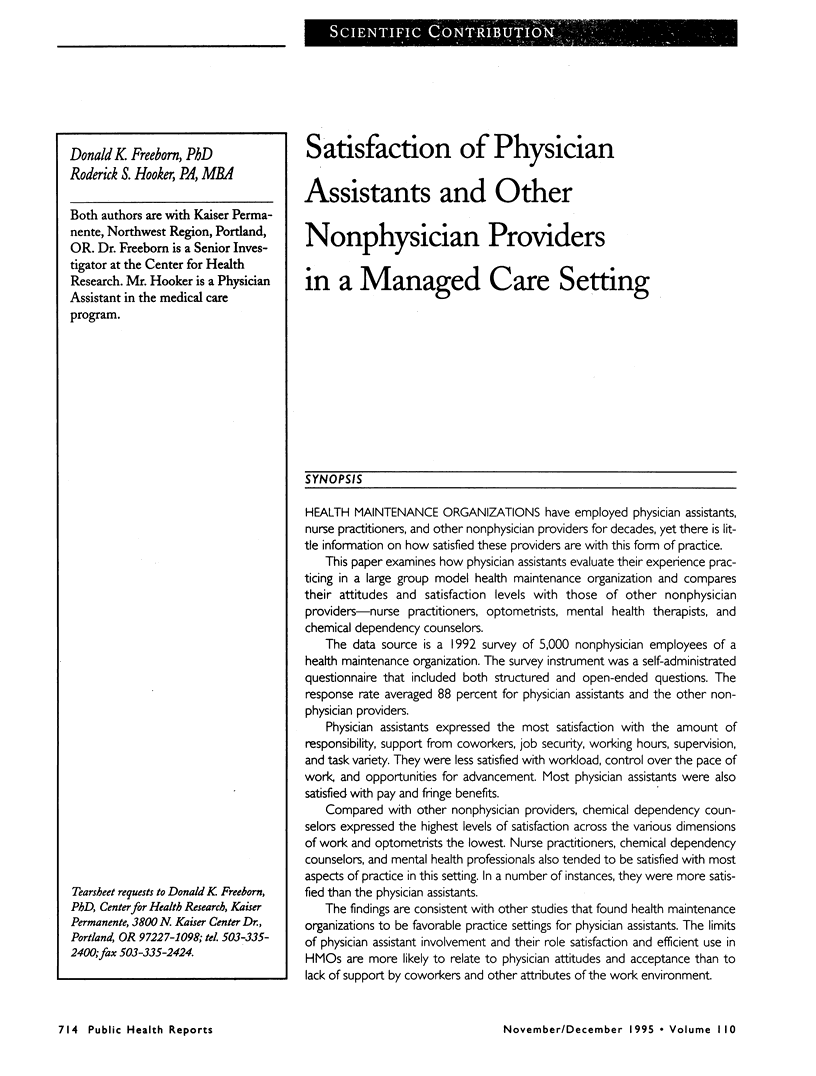
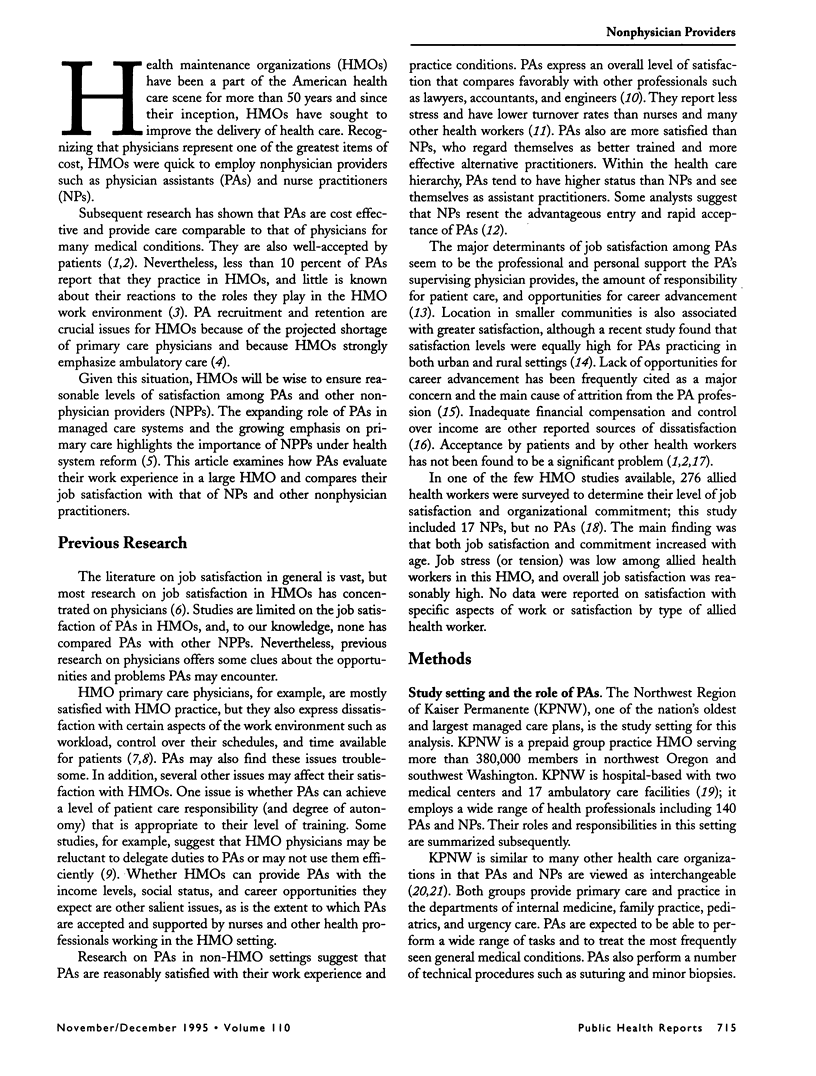
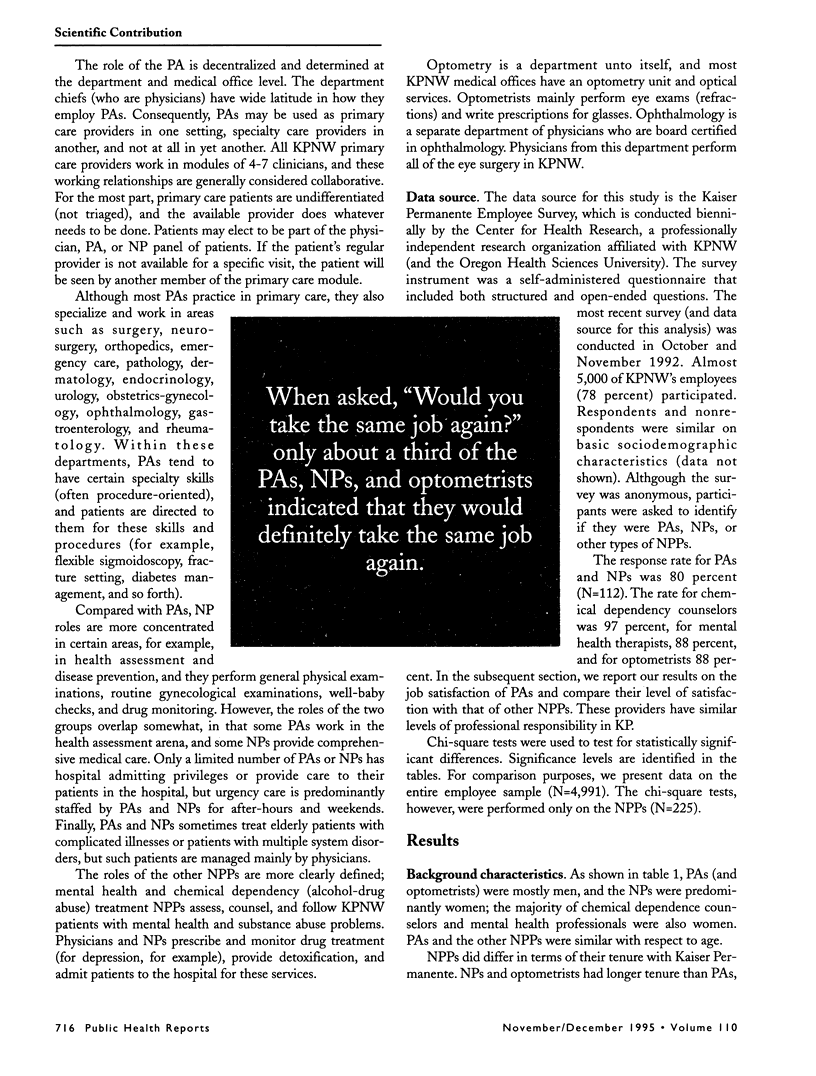
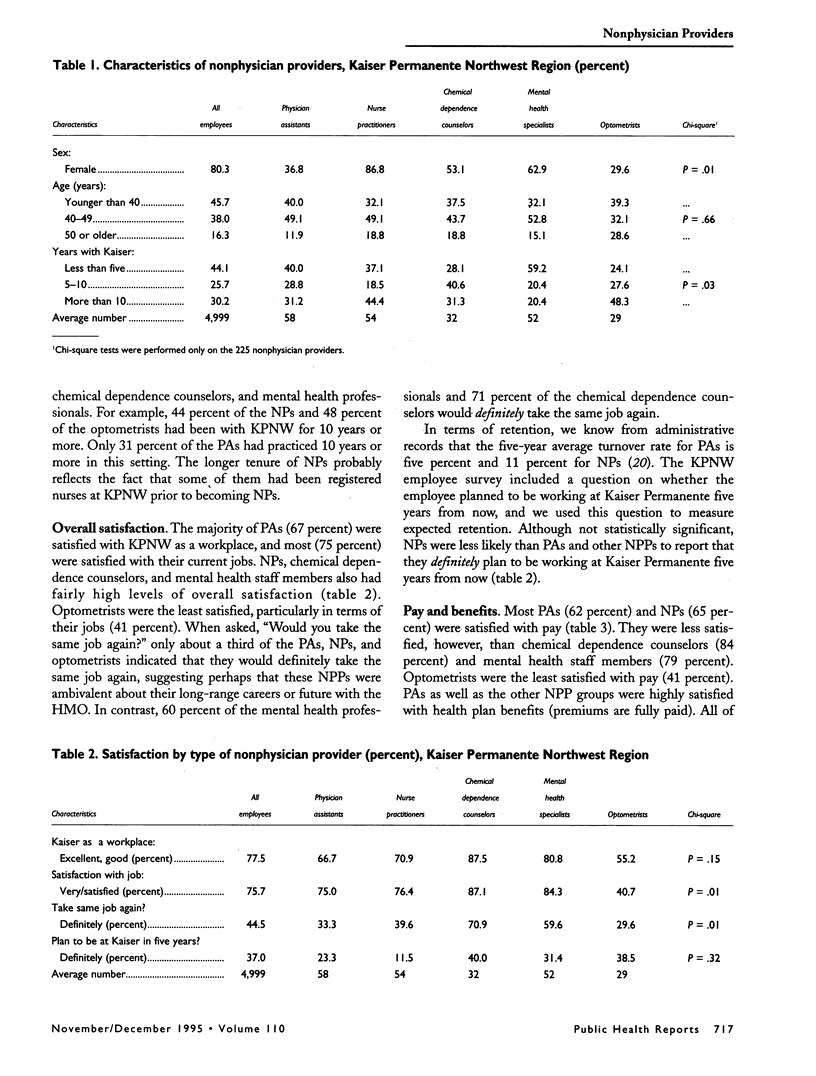
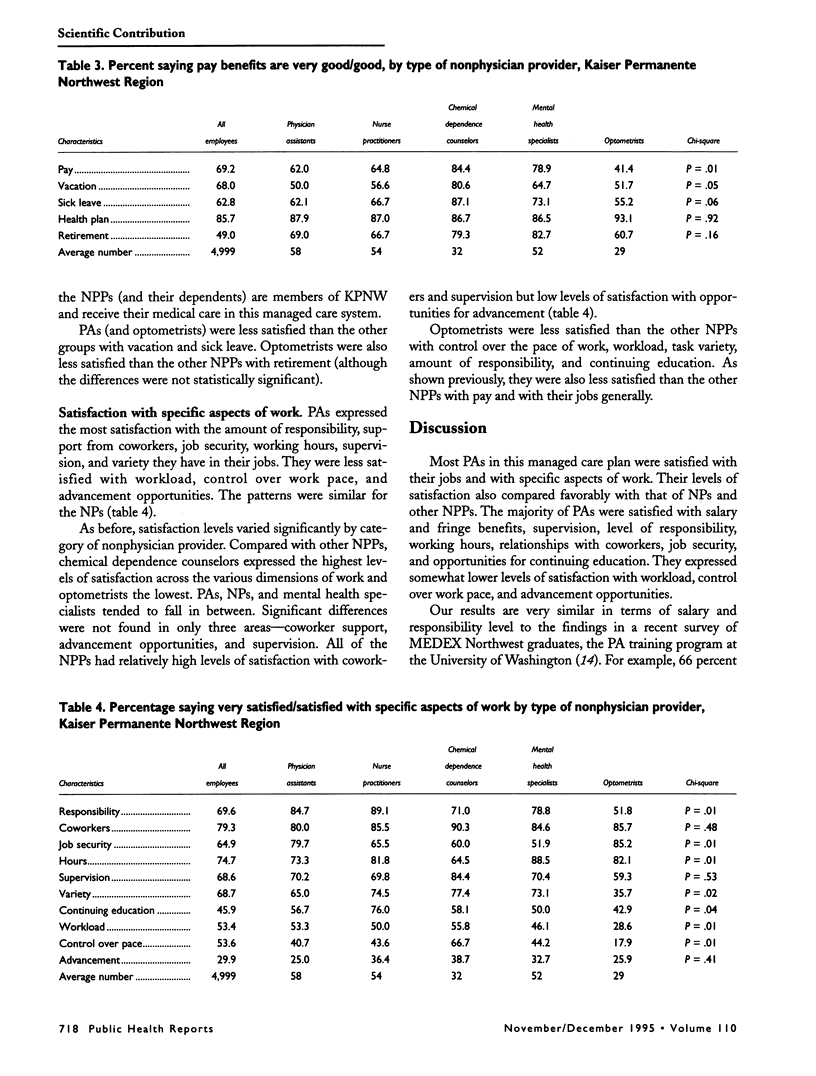

Selected References
These references are in PubMed. This may not be the complete list of references from this article.
- Freeborn D. K. Physician satisfaction in a prepaid group practice HMO. Group Health J. 1985 Spring;6(1):3–12. [PubMed] [Google Scholar]
- Hooker R. S., Freeborn D. K. Use of physician assistants in a managed health care system. Public Health Rep. 1991 Jan-Feb;106(1):90–94. [PMC free article] [PubMed] [Google Scholar]
- Johnson R. E., Freeborn D. K., McCally M. Delegation of office visits in primary care to PAs and NPs: the physicians' view. Physician Assist. 1985 Jan;9(1):159-60, 165-9. [PubMed] [Google Scholar]
- Jones P. E., Cawley J. F. Physician assistants and health system reform. Clinical capabilities, practice activities, and potential roles. JAMA. 1994 Apr 27;271(16):1266–1272. [PubMed] [Google Scholar]
- Larson E. H., Hart L. G., Hummel J. Rural physician assistants: a survey of graduates of MEDEX Northwest. Public Health Rep. 1994 Mar-Apr;109(2):266–274. [PMC free article] [PubMed] [Google Scholar]
- Lichtenstein R. L. The job satisfaction and retention of physicians in organized settings: a literature review. Med Care Rev. 1984 Fall;41(3):139–179. doi: 10.1177/107755878404100301. [DOI] [PubMed] [Google Scholar]
- Nelson E. C., Jacobs A. R., Johnson K. G. Patients' acceptance of physician's assistants. JAMA. 1974 Apr 1;228(1):63–67. [PubMed] [Google Scholar]
- Perry H. B., 3rd The job satisfaction of physician assistants: a causal analysis. Soc Sci Med. 1978 Sep;12(5A):377–385. [PubMed] [Google Scholar]
- Record J. C., McCally M., Schweitzer S. O., Blomquist R. M., Berger B. D. New health professions after a decade and a half: delegation, productivity and costs in primary care. J Health Polit Policy Law. 1980 Fall;5(3):470–497. doi: 10.1215/03616878-5-3-470. [DOI] [PubMed] [Google Scholar]
- Smith H. L., Mitry N. W. The quality of working life for allied health professionals in an HMO. J Allied Health. 1985 Aug;14(3):305–315. [PubMed] [Google Scholar]
- Weiner J. P., Steinwachs D. M., Williamson J. W. Nurse practitioner and physician assistant practices in three HMOs: implications for future US health manpower needs. Am J Public Health. 1986 May;76(5):507–511. doi: 10.2105/ajph.76.5.507. [DOI] [PMC free article] [PubMed] [Google Scholar]


